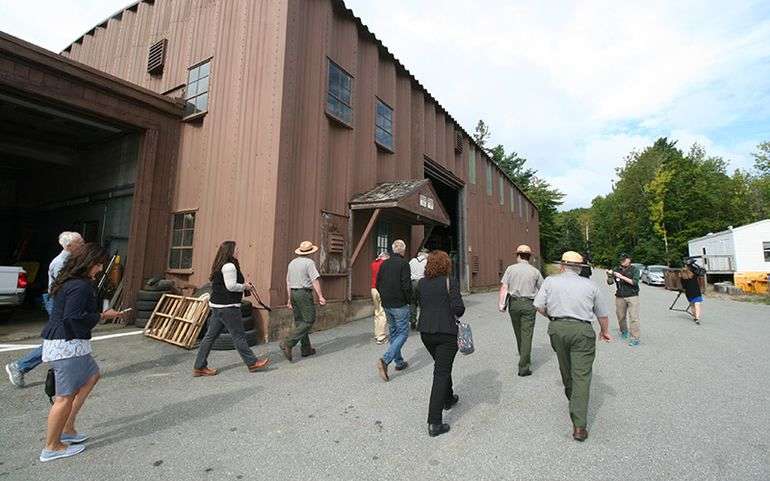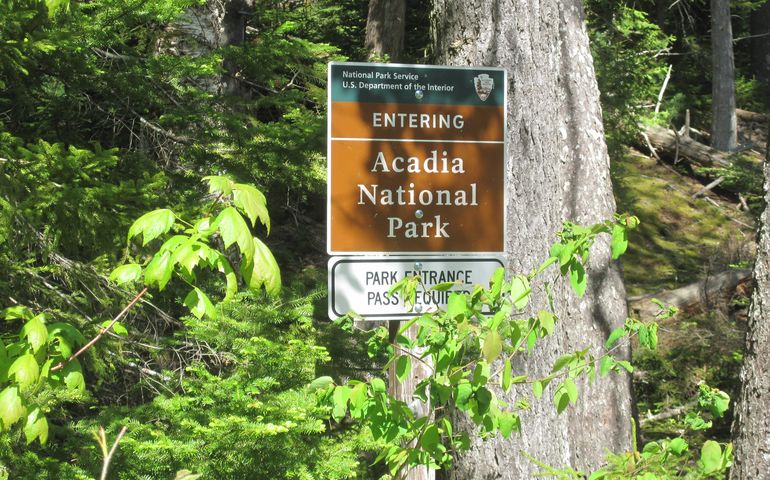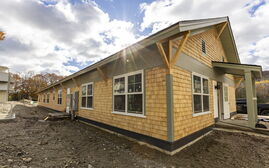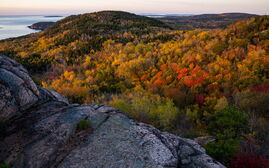
With Outdoors Act funding, Acadia puts infrastructure at top of to-do list
 Photo / Laurie Schreiber
Acadia National Park has schematic drawings ready to go on top projects to be funded by the Great American Outdoors Act.
Photo / Laurie Schreiber
Acadia National Park has schematic drawings ready to go on top projects to be funded by the Great American Outdoors Act.
With an eye toward the billions of dollars in federal funds designated for maintenance projects throughout the national park system, Acadia National Park has drawn up a list of priorities to tackle when its share becomes available.
“We have a lot of deferred maintenance projects that are shovel ready,” Acadia’s superintendent, Kevin Schneider, told the Acadia Advisory Commission during its virtual meeting held yesterday, Sept. 14.
The commission was established in 1986 to consult with the superintendent and the secretary of the U.S. Department of Interior regarding the management and development of Acadia.
On Aug. 4, President Trump signed into law the Great American Outdoors Act, a conservation bill that includes $9.5 billion over five years to help catch up on a $12 billion maintenance backlog at national parks. The act provides up to $1.9 billion a year for five years for needed maintenance for critical facilities and infrastructure in national parks, forests, wildlife refuges, recreation areas and American Indian schools.
Acadia’s share is still unknown.
“We don’t know yet how much money we’ll receive or what will be funded at this point,” Schneider said.
As of 2018, Acadia had $66 million in deferred maintenance. That figure could rise as projects begin and more problems are found, he added.
The National Park Service is required to provide a list of projects to Congress in the October-November timeframe for fiscal year 2021, and then for each fiscal year after that.
With 86 miles of roads, 17 public water systems, 158 miles of hiking trails, 45 miles of carriage roads and four campgrounds, much of Acadia’s deferred maintenance is below the surface, including things like culverts and wastewater systems.
But the backlog includes everything from upgraded restrooms to a new visitor center.
Acadia’s top priority is replacement of its maintenance building, which is significantly deteriorated and undersized.

“We’ve been trying to find funds for that for some time now,” Schneider said.
Other top priorities include:
• Upgrades to park housing, called Schoodic Shores, at Schoodic Point. The apartments were designed as single-family housing but are now used by visitors to the Schoodic Institute on a short-term basis.
• Upgrades to Jordan Pond House. A “significant design flaw” makes the building function like a wind tunnel and calls for a rebuild, he said.
• Bass Harbor Head Light. Built in 1858 and transferred in July from the U.S. Coast Guard to the National Park Service, the lighthouse complex requires substantial work. Consisting of 2.5 acres and six buildings, a non-historic communications tower was removed before the transfer, and a red acrylic covering that gave the light its color was replaced with red LED lighting. The park has held an initial workshop to look at reuse options of the buildings and grounds. Ideas include providing tours or installing a bookstore, art gallery, event space or perhaps an artist-in-residence. The park is looking at building preservation and at capacity and circulation of vehicle traffic in the small parking lot.
• Acadia headquarters building. This structure, near the maintenance building, needs renovation.
Schematic designs on the maintenance building and headquarters building have been completed; the two projects are being run together as a comprehensive design, said Schneider.
Employee housing and water and wastewater systems are other projects in need.
“The list can go on and on, but those are some of the top priorities,” Schneider said.













0 Comments